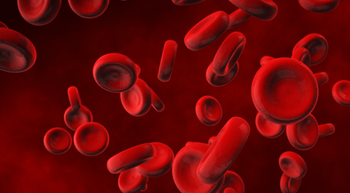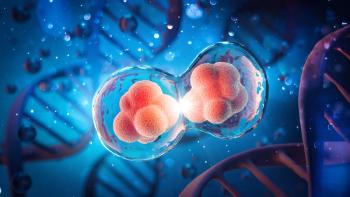
Adolescents and Young Adults With Lymphoma Have Unique Medical, Psychosocial Needs
There are specific challenges when treating AYA patients with Hodgkin lymphoma.
Lisa G. Roth, MD
As awareness of the unique needs of adolescents and young adults (AYA) with cancer increases, there are now clinical trials in Hodgkin lymphoma specifically focused on this patient population.
For example, a phase II trial is investigating the efficacy of combination chemotherapy with or without radiation therapy in young patients with favorable-risk Hodgkin lymphoma (NCT00846742). Eligible patients must be 21 years or older—including a broader age group than what has been observed in the past.
Patients in this age range are often given differing treatments based on whether they visit with a pediatric oncologist or medical oncologist, explains Lisa G. Roth, MD. Now, to address the psychosocial needs and additional aspects of AYA patients, Weill Cornell Medicine’s Center for Lymphoma formed the Adolescent and Young Adult Lymphoma Program.
“There are a lot of opportunities when you look globally at the options that you have for patients in this age range,” said Roth, an assistant professor of pediatrics, Department of Pediatrics and Medicine, Weill Cornell Medicine/NewYork-Presbyterian Hospital. “Don’t limit yourself to what’s happening in the field of pediatric Hodgkin lymphoma or in adult Hodgkin lymphoma. When these groups work together, it really expands the opportunities you have for treatment options for these patients.”
Roth discusses the challenges of treating adolescent and young adult patients with Hodgkin lymphoma and the benefits of having a multidisciplinary approach with this population. She shared this insight during the 2017 OncLive® State of the Science SummitTM on Hematologic Malignancies.
What did you discuss regarding AYA patients with Hodgkin lymphoma?
Roth: It is a unique age range, and an age range that is particularly relevant in Hodgkin lymphoma, where the peak age incidence is actually young adults. They have unique medical and psychosocial needs relative to younger pediatric patients, as well as the older adult oncology patients.
What we talked about is some of the differences in treatment approaches and how, specifically, to approach patients in this unique age range where it’s kind of a unique situation where the patients in this age range might walk into a pediatric oncologist or a medical oncologist and receive vastly different treatments for the exact same diagnosis. We went through those specific issues, what considerations are relevant for this age group, and how you should approach treatment for patients in the AYA age range.
How do you decide if an AYA patient should go to a pediatric or medical oncologist?
That is a very good question and there really is not a right answer here. What we have done at Weill Cornell Medicine is to create an AYA Lymphoma Program. It is a collaboration between the pediatric oncologists and the medical oncologists so that we can work together to decide what’s optimal for each patient. It is a unique opportunity to provide care for them that is specific to the needs of the patients in this age range.
That includes not only optimizing their medical treatment, but addressing concerns, such as fertility preservation, minimizing long-term effects, and the psychosocial aspects of being a young adult with cancer. You might be in the middle of school or just starting a first job, so how to navigate and cope with all of those things is unique to that age group. The AYA Lymphoma Program that we have has a specific multidisciplinary approach and clinicians, social workers, psychologists, and a fertility preservation team work together to optimize care for these patients.
What advice do you have for community oncologists who are treating these AYA patients with Hodgkin lymphoma?
They really do have unique psychosocial needs that are different than younger patients and from adult patients. All of these patients can feel very isolated because they don’t quite fit in with the other people that they’re seeing in the waiting room being treated for other diagnoses. A specialized center that focuses on care in this age group truly does serve to their advantage, where you can have someone focusing with experience specific to this age group and directing them to the support networks that can help them through this.
For this age group, it’s very different than what a support network would look like for a pediatric patient and an older patient. You are getting them the supportive care they need, as well as the counseling for optimal therapy with regard to minimizing long-term toxicity, optimizing their fertility preservation, and planning for what we expect to be many life years ahead of their treatment. It is very important.
We think to address those issues at the beginning and then offer them a seamless transition from their treatment to their survivorship. Therefore, linked to the AYA Program is a survivorship program where we have a physician who specifically focuses on the issues of survivors—making sure that they maintain the optimal health outcomes as they get older and transition from treatment to survivorship.
That sounds just as important: to have survivorship care at a young age is pivotal for these patients to process their cancer experience later in life, too. Right?
One of the things that we have seen now that we recognize that this is an underserved group in oncology is that the improvements in outcomes that we’ve seen in younger patients and older patients, we don’t see in this age range. That is because, historically, we haven’t focused on patients in this group. They have been divided between pediatric and medical oncologists and the AYA Lymphoma Program gives us the opportunity to focus on this age group, helps to optimize their care, and give them access to clinical trials that they might otherwise not have access to. Then, we are also leading efforts for the research and clinical trials focused on this age group.
What are the standard therapies administered to treat these patients? Are there any novel regimens being explored now in clinical trials?
There are a lot of new therapies coming out in Hodgkin lymphoma right now; a lot of them are utilizing the immune system to help fight the Reed—Sternberg cells, which are the cancer cells in Hodgkin lymphoma.
Most of these therapies have initially been studied in patients with relapsed disease or those who haven’t responded to treatment. However, what we are doing now is moving these treatments to the upfront setting and evaluating them for patients at the beginning of their treatment. This is to see if we can use these therapies to not only improve cure rates, but also to potentially peel back some of the standard, more toxic chemotherapies that we use and supplement them with targeted therapies that have potentially less short-term and long-term toxicity.
Many current clinical trials that we have ongoing are bringing these newer agents to the forefront—specifically, agents such as brentuximab vedotin (Adcetris) and agents that target PD-1/PD-L1 in Hodgkin lymphoma. Those are the aims of the current trials both in pediatrics and adults. One of the things that we have done that is important is broaden the age range of the patients eligible for these trials.
Often, on a pediatric trial, the age range will go up to age 21 or even age 30. We are expanding the opportunity for patients to enroll on those trials. Adult trials often go down to age 18, or maybe even age 15. Therefore, we are helping patients who typically would walk into a pediatrics office and not be aware of these trials; they can have access to these trials or agents before they are available as standard of care. This is something that is very important to this age group.
Particularly, these newer agents may have less [associated] toxicity and allow us to peel back on the standard chemotherapy that we use. That is where the field of Hodgkin lymphoma is moving right now—adding these targeted therapies to upfront treatment for our patients.
Anecdotally, how have you seen these younger patients tolerate these newer regimens?
Younger patients can tolerate chemotherapy remarkably well. We do see that they are able to tolerate some immediate side effects and we almost are willing to use a little bit of a more immediate intensive therapy if the trade-off is that these therapies have less long-term toxicity.
Especially in Hodgkin lymphoma, we are expecting to cure the vast majority of our patients. Therefore, we are not just thinking about their immediate treatment over the 6- to 8-month period for which they are receiving their treatment, but the effect that this treatment is going to have on their life 20, 30, or 40 years down the road. Patients can tolerate treatment, especially in this age group. It kind of gives us the opportunity to change what we do a little bit and allows us to modify things and reduce the exposure to these agents that have long-term toxicity.
In summary, what are the main takeaways of your lecture?
The key here is collaboration and, not just between pediatric and medical oncologists, but also the radiation oncologist, the bone marrow transplant physicians, the fertility preservation team, social workers, and psychologists. The theme here is to optimize care in this age group. It is collaboration and a multidisciplinary approach.
Newsletter
Knowledge is power. Don’t miss the most recent breakthroughs in cancer care.






























































































